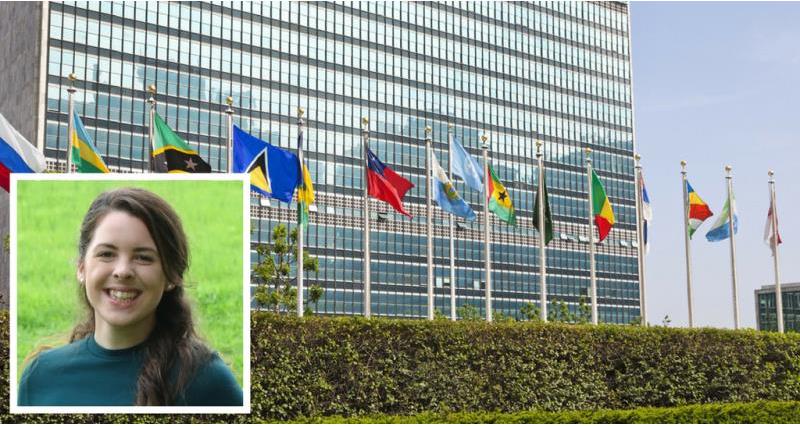As the process of taking the UK out of the EU continues, so does that of the UK reclaiming its seat at the World Trade Organisation (WTO). With the next stage of this process beginning, Rebecca Hesketh explores what happens next and what this may mean for UK farming.
Background
On the 21st December, Dr Liam Fox announced that the UK Government was invoking GATT Article XXVIII (28) negotiations at the WTO. This is the next stage of the process for the UK in re-establishing itself at the WTO and the establishment of its own “Schedule of Concessions for goods”– a necessary element of the UK’s baseline for international trade and the access to the trading platform that the WTO provides post-Brexit. In any post-Brexit scenarios, the UK can then build upon this baseline of trade with new Free Trade Agreements (FTAs) and other preferential deals allowing the UK to trade on more favourable terms with other countries.
The government has already made progress in this area, laying down its understanding of its trade commitments back in July 2018. The draft document released at this time, referred to as the draft Schedule of Concessions includes the top-end tariff rates (‘bound’ tariffs) that the UK Government can apply along with any quotas which would allow in a certain quantity of a product at a zero or lower rate tariff (Tariff Rate Quotas or TRQs).
UK open to challenges
The latest step in this process is trickier. The UK having set out its draft Schedule, must now invite international partners to approve it or to challenge its content. A number of challenges are likely to be made with the hope of countries around the world forcing the UK to increase the amount of market access given in the Schedule. This could mean an increase in the size of the quotas which allow in a quantity of product at a lower tariff rate. A large number of these TRQs are agricultural – the EU currently has 124 on agricultural products and only 18 on other goods - so this process of negotiations over the access that they afford is particularly relevant to our industry.
Methodology
To establish its baseline, the UK has taken its fair share of the concessions and quotas that are currently in place through the EU’s Schedule. The EU and UK split these concessions by considering trade data from a 2013-15 reference period and there has been a co-operative approach throughout. The EU will similarly adjust its quotas accordingly.
One of the more notable concessions for UK farming is the New Zealand lamb TRQ. The UK has committed to take a 50% stake of post-Brexit. This 50% stake is based on how much of the NZ lamb imported into the EU during the years 2013-15 came to the UK. Basing the share on actual tonnage and applying it to the quota is a defensible position and it is the only fair way to ensure that commitments are honoured, but not expanded to the detriment of UK farmers.
Challengers – establishing a negotiating interest
The Article 28 stage begins with a 90 day period in which those who object to the Schedule have to claim a ‘significant’ interest in a TRQ, in order to be able to claim negotiating rights. To do this they must either be the largest supplier for a specific TRQ or their exports must account for more than 10% of the TRQ in question. When this period is over, the negotiating rounds will begin. During these negotiations, the UK Government can either stick to its approach on the splitting of these TRQs or it may feel the pressure to give way and allow further market access in order to appease other WTO members. The latter of the two options would likely reduce the protection which the TRQ affords to our domestic market. This could leave our farmers vulnerable to competitors who do not necessarily produce food to the same high standards as we do in the UK. A position that we as the NFU believe would be unfair and unacceptable.
Certification
The process of re-establishing the UK at the WTO has been ongoing since July last year, which was the point at which the UK Government circulated its draft Schedule of Concessions for Goods. From here, the UK entered into a period for circulating the draft Schedule during which members of the WTO (there are 164 in total) could make known objections. With the closure of this first step in October 2018, the UK had from that point onwards an ‘uncertified’ Schedule from which it could trade once the UK has left the EU. This means that the UK can ‘fall back’ on WTO trading terms should there be no deal reached before the end of the Article 50 process, however unpalatable those trading terms may be. The UK will continue the process of ‘certification’, as other members would expect them to do, in order to get all 164 members of the WTO to give the ‘okay’ to the UK’s Schedule of Concessions even though they can trade in practice on an ‘uncertified’ Schedule, the precedent for which is set by the EU who have not had their Schedule certified since 2013. Once this process is complete, it will be less likely that the UK will see challenges from other members of the WTO over the commitments they have set out.
You may also be interested in:
